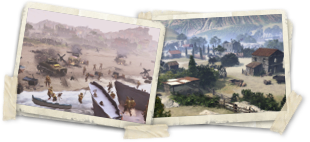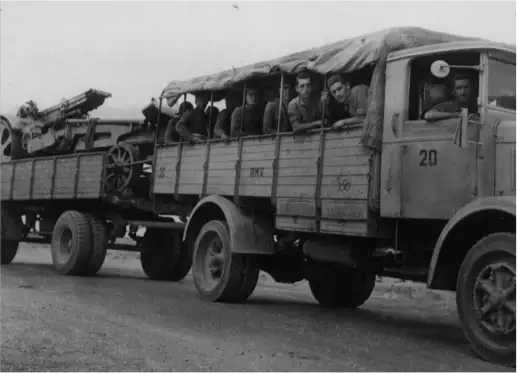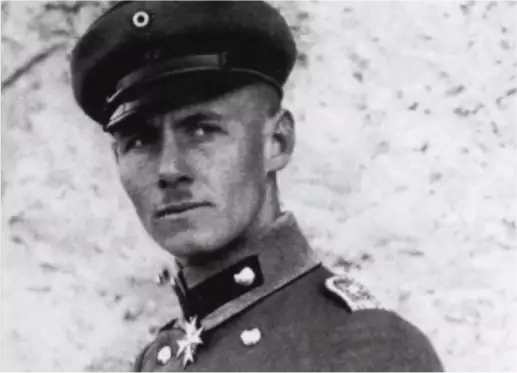
Experience it in game
Play through the battle yourself in the immersive Company of Heroes 3 campaign.
 Experience the dynamic campaign in game with
Experience the dynamic campaign in game with 
 Find out more
Find out moreCornered in the trenches and vastly outnumbered by the Afrika Korps, The Desert Rats didn’t have it easy. An acclaimed movie of the same name retold the story of the Allied forces at the Battle of Tobruk, who were quite literally stuck between a rock and a hard place during World War Two.
This 1953 film is seen by some as a classic of its time, receiving an Oscar nomination and an NBR Award for Best Actor. It even has a healthy 71% score on Rotten Tomatoes.
But was its portrayal accurate to history?
Here, we analyse what this Tobruk film got right, and what it got wrong, with the help of an historical expert.
Clip
The Desert Rats 1953 Trailer
Something of a quasi-sequel to 1951’s Erwin Rommel biopic ‘The Desert Fox’, The Desert Rats honours the 9th Australian Division’s role during Tobruk.
The movie follows Captain "Tammy" MacRoberts, a steely-eyed British officer leading a band of ANZAC troops in their battle against the Germans.
When it’s not focused on ferocious warfare and ground-shaking explosions, ‘The Desert Rats’ cleverly highlights the budding relationship between MacRoberts, his motley troops and his old schoolmaster. We are also presented with a picture of army discipline being broken down, and a blossoming friendship between officers and private soldiers.
One of the main draws of the film was its impressive cast, including James Mason, Robert Newton and a 27-year-old Richard Burton, who had recently migrated from working in theatre. ‘The Desert Rats’ would be his first war movie, and only his second Hollywood venture.
In 1951, two years before its release, 20th Century Fox had presented ‘The Desert Fox’, a film about Rommel which also starred Mason. While the film was a box office favourite, many viewers criticised the somewhat heroic portrayal of the German general.
In the Tobruk film, Rommel was presented less sympathetically.
Did you know?
Richard Burton, who starred as MacRoberts, would later claim that his dialogue sounded as if it had been directly lifted from an army training manual.
Dr Robert Lyman, author and historian, notes that many of the films in the ‘50s and ‘60s covered WW2 stories where events were exaggerated and changed.
He says: “We’re now getting to a point in time where we want our stories to be historically verifiable, and many of these early ones weren’t. But not just the films, many of the stories that were written were easily exaggerated and a lot of the direct historical pertinence is lost. Very few of them actually are historically reliable.”
When commenting on this Tobruk movie specifically, Dr Lyman describes it as a “pretty good effort”, however.
“It’s as much a docu-drama as a movie, but it stuck pretty much to the facts. The storyline – of an imported British officer imposed on the Australians – doesn’t work much, but I think it doesn’t detract from the film.”
Did you know?
‘The Desert Rats’ was one of the last films produced by 20th Century Fox in the standard academy format. After just four months, the production company began to release films in the CinemaScope format. This started with "The Robe" (1953), which also starred Burton.


Experience it in game
Play through the battle yourself in the immersive Company of Heroes 3 campaign.
Due to Rommel’s portrayal in the film, many critics and viewers wondered whether he was actually involved in a plot to kill Hitler. In 2018, documents related to German reserve officer Rudolf Hartmann were found, suggesting that Rommel was indeed planning to permanently remove the leader. His motives, however, remain a matter of debate.
When MacRoberts gets wounded and captured, and ends up receiving medical attention, he and Rommel have a back-and-forth in English. Rommel says that the Axis will eventually take Cairo, to which MacRoberts replies that if they can’t take Tobruk, then they can’t take the Egyptian capital. Their banter ends with Rommel promising: ‘when your country is defeated, we may meet again.’
Though this is pure fiction, Rommel did occasionally visit medical centres throughout the desert war. Adding to this, Dr Lyman says that the Tobruk film captured Rommel “pretty well”.
He comments: “The meeting with MacRoberts was contrived of course, but Rommel (though he didn’t speak English) loved meeting and, through an interpreter, talking with Allied prisoners of war.”
Did you know?
All of the desert scenes were shot in California, while much of the film extensively used archive shots from the British documentary compilation film ‘Desert Victory’.

Throughout the film, certain German words and phrases have been accused of being seemingly misused or completely wrong altogether.
Rommel is addressed as a ‘Field Marshal’ at the beginning of the film, but he was in fact still a General at the time. He was only promoted to Field Marshal after the eventual capture of Tobruk in 1942, when the war swung back in favour of the German forces.
MacRoberts, meanwhile, is seen wearing a three-pip insignia on his shoulders, indicating a Captain. He is then promoted directly to Lieutenant Colonel. However, he would have needed to be a Major first – wearing a single crown on his shoulders.

Australian troops occupy a front line position at Tobruk
©Relic Entertainment. All rights reserved. Developed by Relic Entertainment. Entertainment, the Relic Entertainment logo, Company of Heroes and the Company of Heroes logo are either registered trademarks or trademarks of Relic Entertainment. Relic Entertainment is registered in the U.S. Patent and Trademark Office. All other trademarks, logos and copyrights are property of their respective owners.